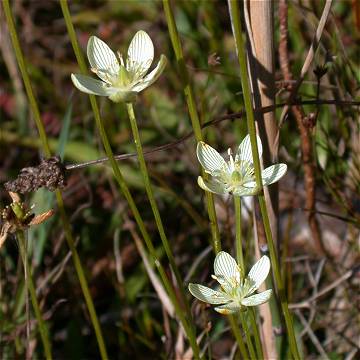

Parnassia glauca - (image 1 of 5)
Taxonomy
Family: Saxifragaceae
Habitat
Calcareous springy places like fens. Also occurs on interdunal flats near Lake Michigan.
Associates
In calcareous fens, most often with Lobelia kalmii. Also with Agalinis tenuifolia, Calamintha arkansana, Carex hystericina, Cirsium muticum, Eleocharis elliptica, Eupatorium perfoliatum, Gentiana procera, Lysimachia quadriflora, Muhlenbergia glomerata, Panicum flexile, Pedicularis lanceolata, Potentilla fruiticosa, Scleria verticillata, Solidago ohioensis, Solidago patula, Solidago riddellii, Solidago uliginosa, Triglochin maritima, Valeriana ciliata.
Distribution
In the U.S. from New England south to NJ, west through the Great Lakes to IA, MN, and the Dakotas. Also occurs in southeastern Canada.
Morphology
Herbaceous perennial to 20" high. Leaves all basal (sometimes with 1 or 2 cauline leaves), up to twice as long as wide, heart-shaped ovate or round, entire or remotely and scarcely repand-denticulate. Flowers to 1" wide, solitary, white, often with gray-green veins; sepals 5; petals 5; stamens 5; there are additional 3-pronged, gland-tipped, sterile stamens at the base of each petal forming a circle around the pistil. Scape glabrous. Fruit a 4-parted capsule.
Notes
Flowers mid August to early October.
Wetland indicator: Obligate
Parnassus refers to the mountain in Greece where ancient naturalist Dioscorides described similar plants in meadows.
References
Niering, W. A. 1979. The Audubon society field guide to North American
wildflowers: eastern region.
Knopf/Random House, New York.
Swink, F. and G. Wilhelm. 1994. Plants of the Chicago Region.
Indiana Academy of Science. The Morton Arboretum. Lisle, Illinois.
|
Michael Hough © 2005 |